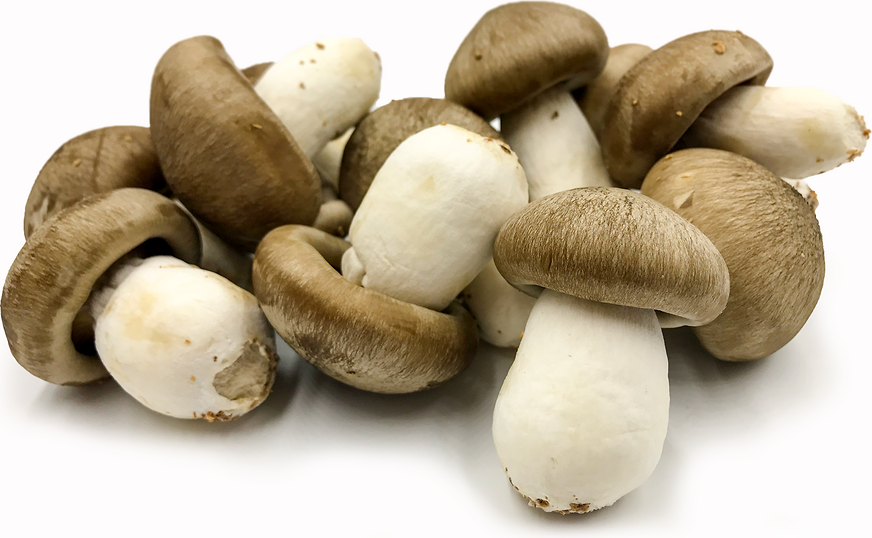


Japanese Mushrooms
Estimated Inventory, lb : 0
Description/Taste
Japanese mushrooms range in size from very small to large, growing individually or in compact clusters, and can be uniform to irregular in shape. The smooth caps are convex, rounded, or flattened in shape and depending on the variety, are white, brown, ivory, to orange. Underneath the cap, there are many different styles of gills, teeth, or pores that are unique to each variety, and the stems can be stout and thick to very thin, slender, and delicate. When cooked, Japanese mushrooms are chewy, crisp, tender, or buttery, and have earthy, woodsy, sweet, and mild flavors.
Seasons/Availability
Japanese mushrooms are available in the wild during the fall, while cultivated mushrooms are available year-round.
Current Facts
There are over five thousand different varieties of mushrooms in Japan with approximately one hundred of the varieties believed to be edible. Also known as Kinoko in Japanese, the most common Japanese varieties found in local markets include enoki, maitake, shimeji, matsutake, nameko, and shiitake. Mushrooms are a staple ingredient in Japanese cuisine and when in season, restaurants will change their menus to incorporate various varieties to add savory, umami flavors. Japanese mushrooms are also grown in other parts of the world and are valued for their meaty and crunchy textures, earthy flavors, and are used in a variety of culinary applications.
Nutritional Value
Japanese mushrooms are an excellent source of vitamin D and also contain potassium, zinc, iron, phosphorus, manganese, and amino acids.
Applications
Japanese mushrooms are best suited for cooked applications such as braising, sautéing, stir-frying, grilling, or boiling. Depending on the variety, they can be used in hot pots, clear soups, stir-fries, noodle dishes, rice dishes, tempura, omelets, and quiches. They can also be used in sauces, stocks, custards, and mousses. Japanese mushrooms pair well with miso, garlic, onions, ginger, grated daikon radish, cabbage leaves, spinach, shiso, mitsuba, basil, cilantro, bok choy, eggplant, peppers, konbu kelp, pork belly, bacon, poultry, seafood, clams, rice, yuzu, rice vinegar, mirin, sake, soy sauce, fish sauce, sesame oil, and honey. They will keep up to one week when stored in a paper bag in the refrigerator.
Ethnic/Cultural Info
Japanese Mushrooms have been used for both culinary applications and in traditional medicine since ancient times. In Japan, mushrooms are the temple food, known as shojin ryori, in Buddhist temples and the practice of not eating meat has elevated the status of the mushroom in the country. Influenced by Buddhism, Japanese emperor Saga in the 9th century even passed a law prohibiting the eating of meat. Thanks to their high nutrient content and meaty, toothsome texture, the mushroom became a large part of the Japanese diet and remains a staple today. Japanese mushrooms are also used in traditional medicine to boost the immune system, increase endurance, and reduce inflammation.
Geography/History
Japanese mushrooms have been growing since ancient times and are both found in the wild and cultivated. Today many varieties can be found worldwide and are available at farmers markets and specialty grocers in North America, Europe, Asia, and Australia.
Recipe Ideas
Recipes that include Japanese Mushrooms. One
Podcast




